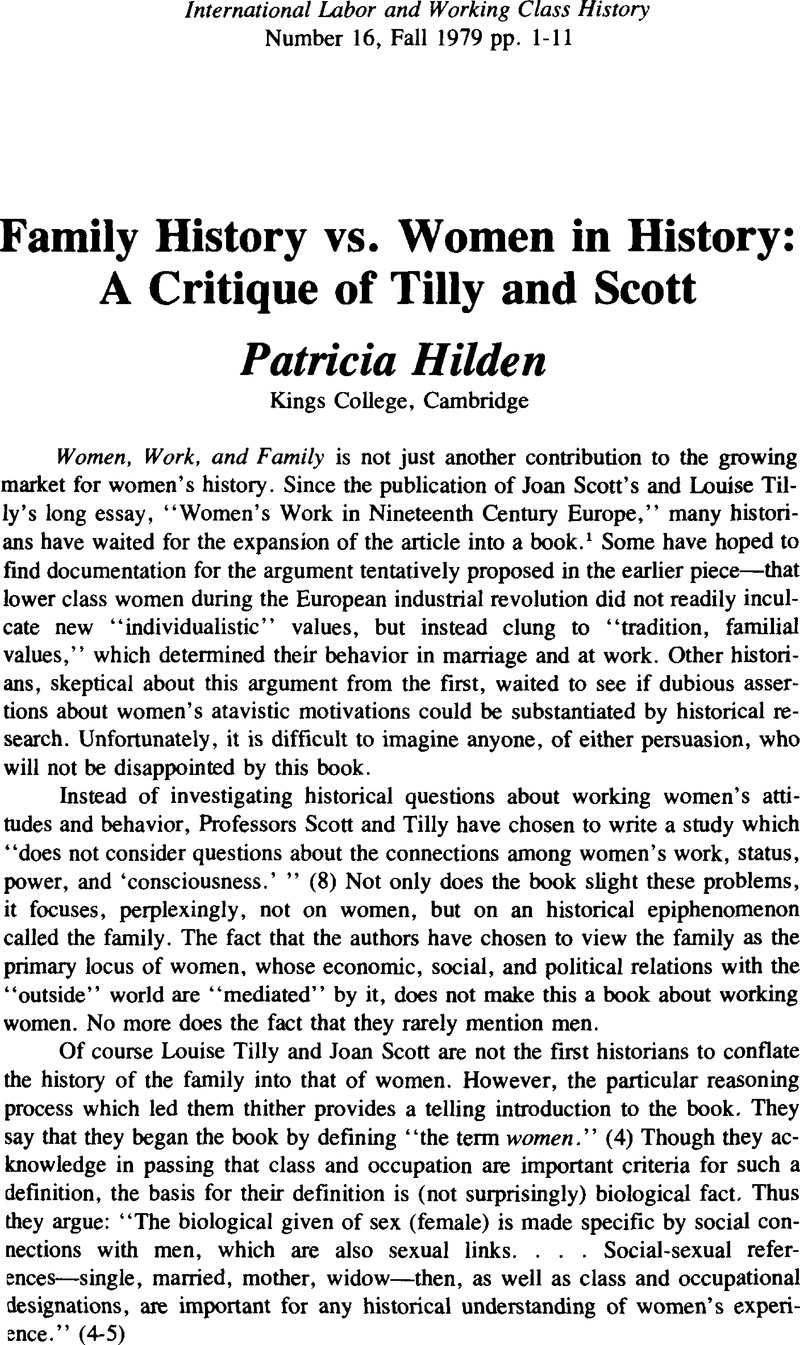No CrossRef data available.
Published online by Cambridge University Press: 16 December 2008

1. Tilly, Louise A. and Scott, Joan W., Women, Work, and Family (New York: Holt, Rinehart and Winston, 1978)Google Scholar; Scott, and Tilly, , “Women's Work and the Family in Nineteenth Century Europe,” Comparative Studies in Society and History, 17 (1975), 36–64.CrossRefGoogle Scholar
2. The authors quote Clara Collet's observations of London in support of this assertion: “The mothers discuss the number they have buried with a callousness amounting at times almost to pride in the vastness of their maternal experience.” (142)
3. My research, on women textile workers in Lille, Roubaix and Tourcoing, 1880–1914, shows that many women valued their economic independence, and wanted to work outside their homes. Furthermore, only some men preferred wives at home, and only some women shared that desire.
4. The domestic outwork system was commonly held by the French working class to be the most exploitive form of labor, outside of prostitution, available to women.
5. See Banks, J.A., Prosperity and Parenthood (London: Routledge and Kegan Paul, 1954).Google Scholar
6. It is wrong to portray working class women at the turn of the century as similar to middle class housewives. Even when they were not employed in factory labor, they ordinarily spent their time in a variety of money-earning occupations. See, for example, Robinson, Joe, The Life and Times of Francie Nichol of South Shields (London: Futura Publications, 1977).Google Scholar
7. Quoted in Lewenhak, Sheila, Women and Trade Unions (London: Ernest Benn Ltd., 1977), vi.Google Scholar
8. Jones, Gareth Stedman, “From Historical Sociology to Theoretical History,” British Journal of Sociology, 27 (1976), 295.CrossRefGoogle Scholar
9. See Hobsbawm, Eric, “Man and Woman in Socialist Iconography,” History Workshop, 6 (1978), 121.CrossRefGoogle Scholar
10. This was actually a question put to me by a student who had just read a book on women in American history.